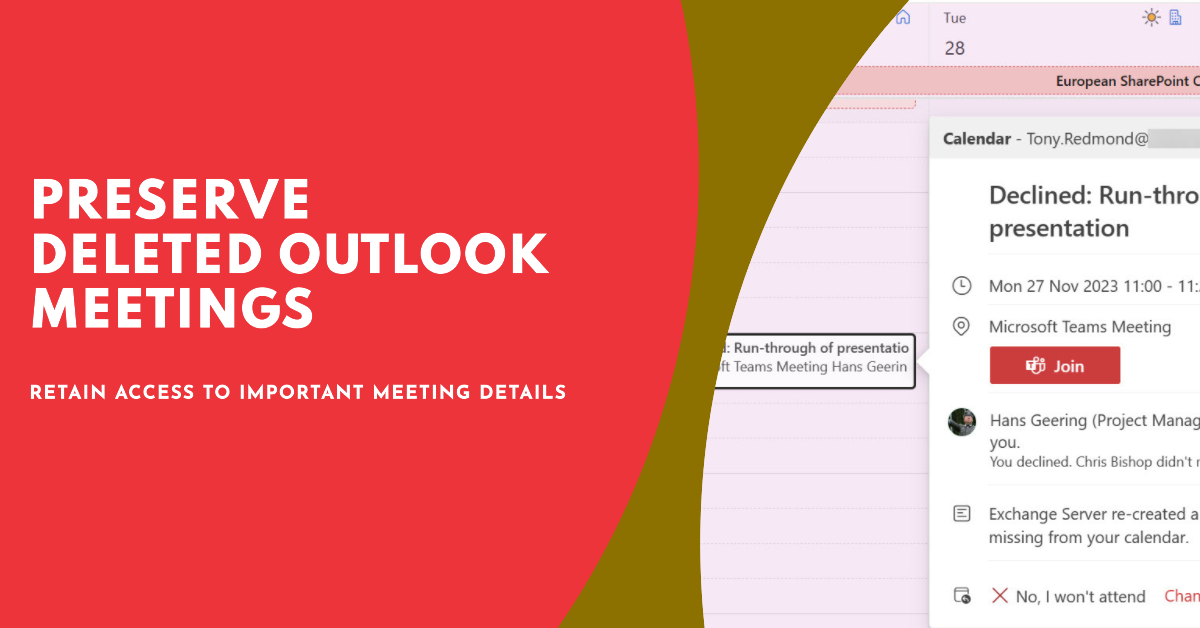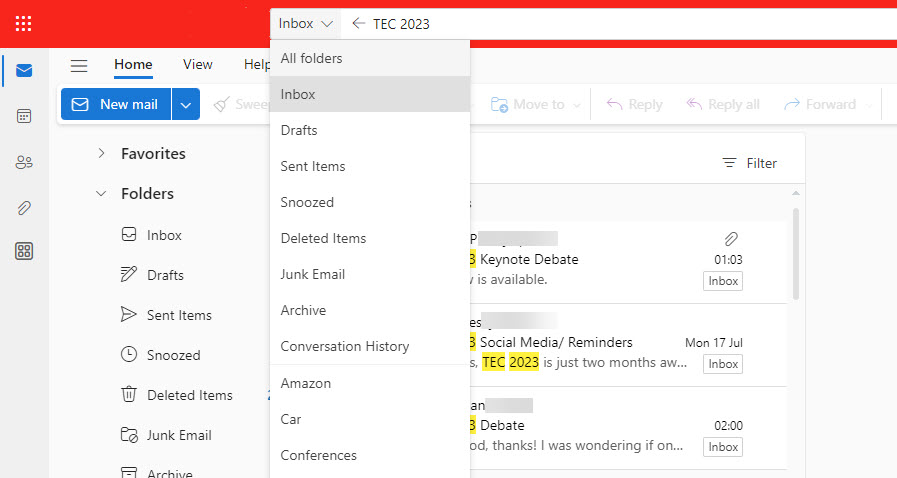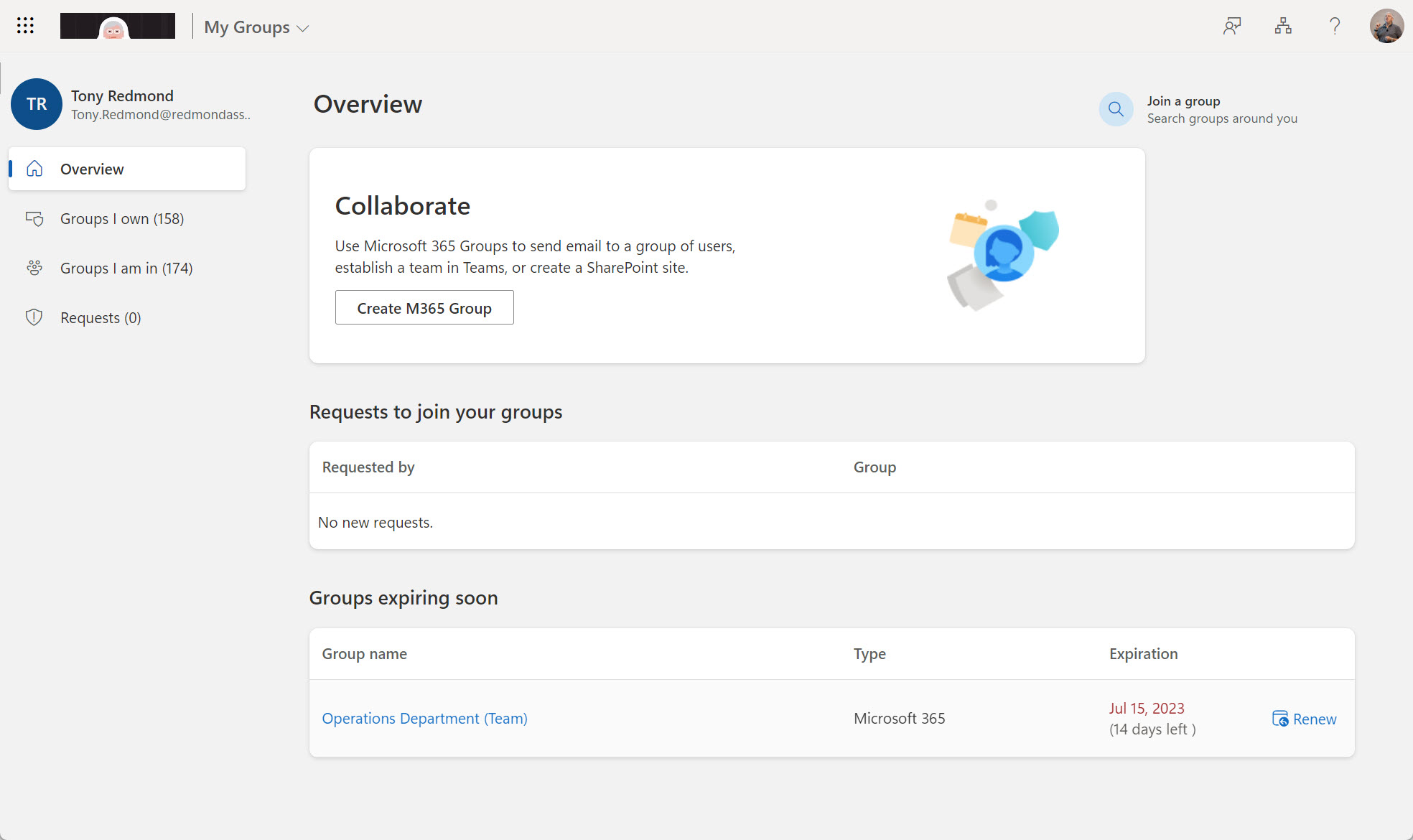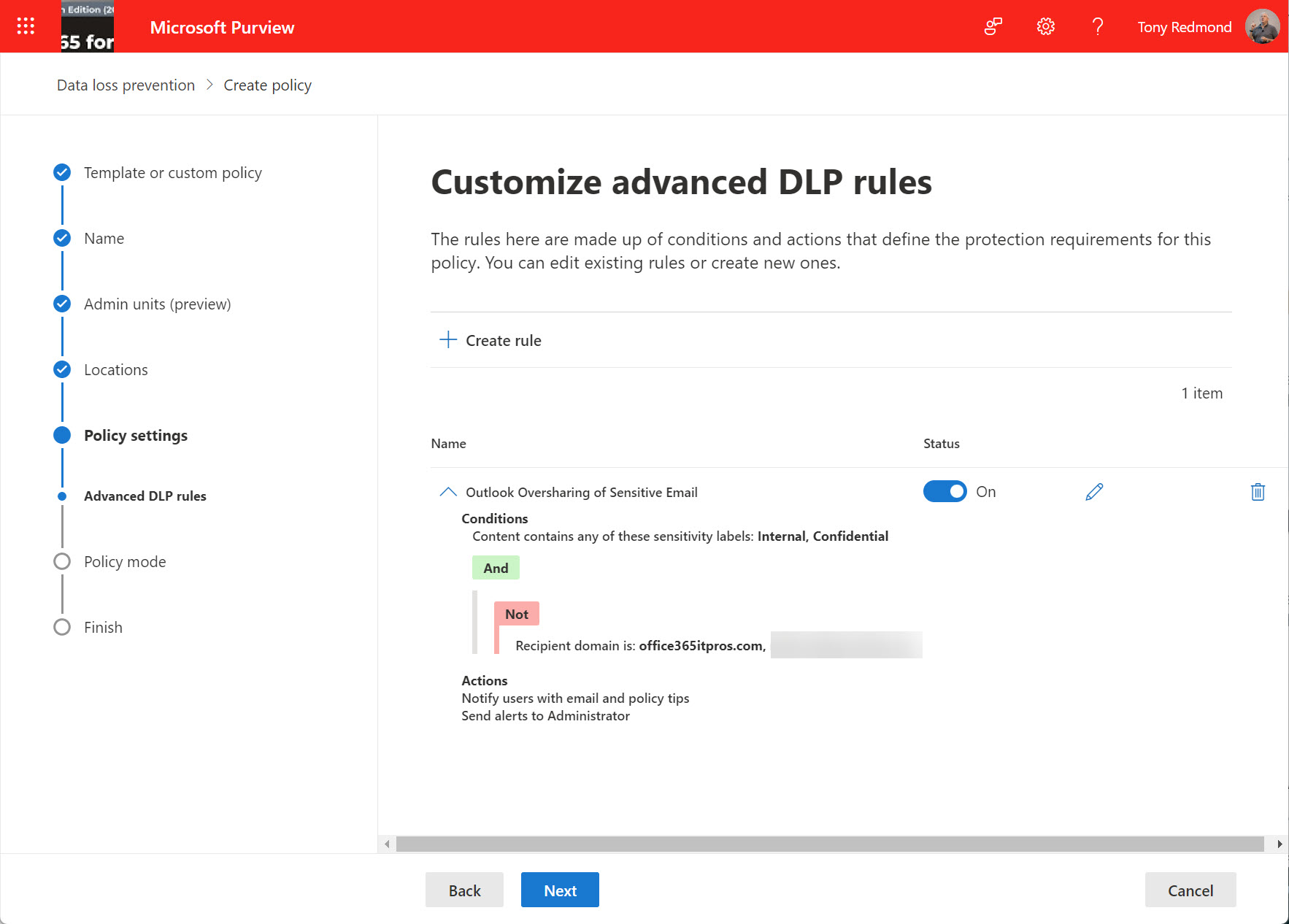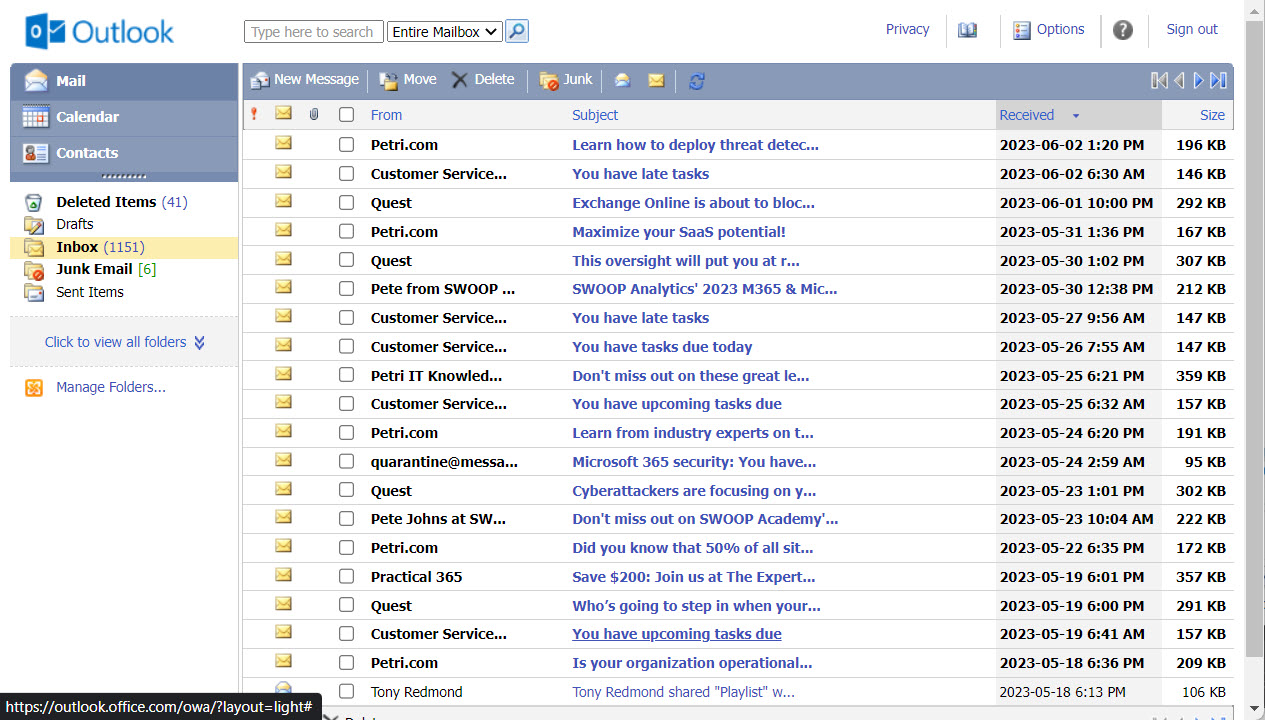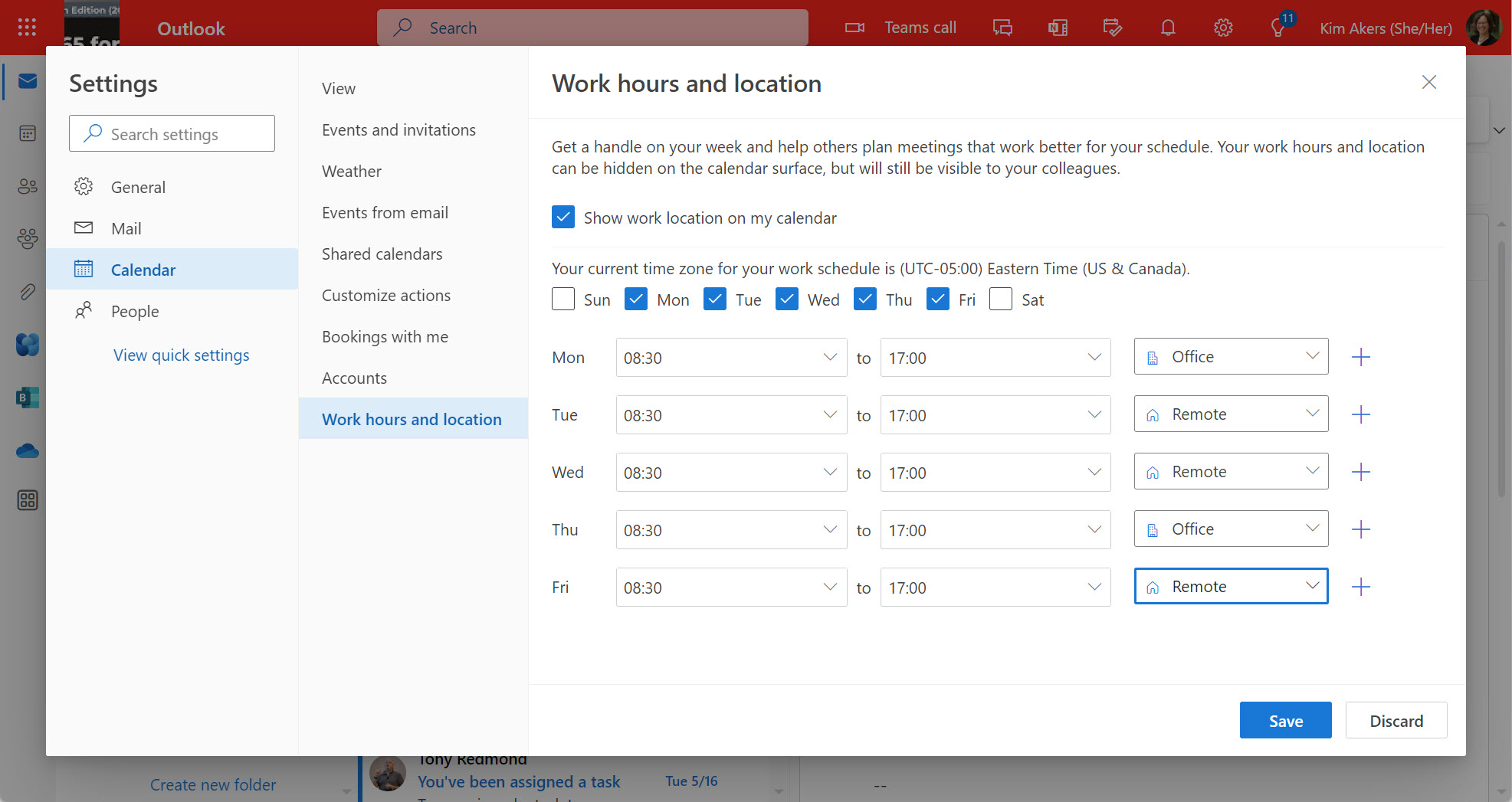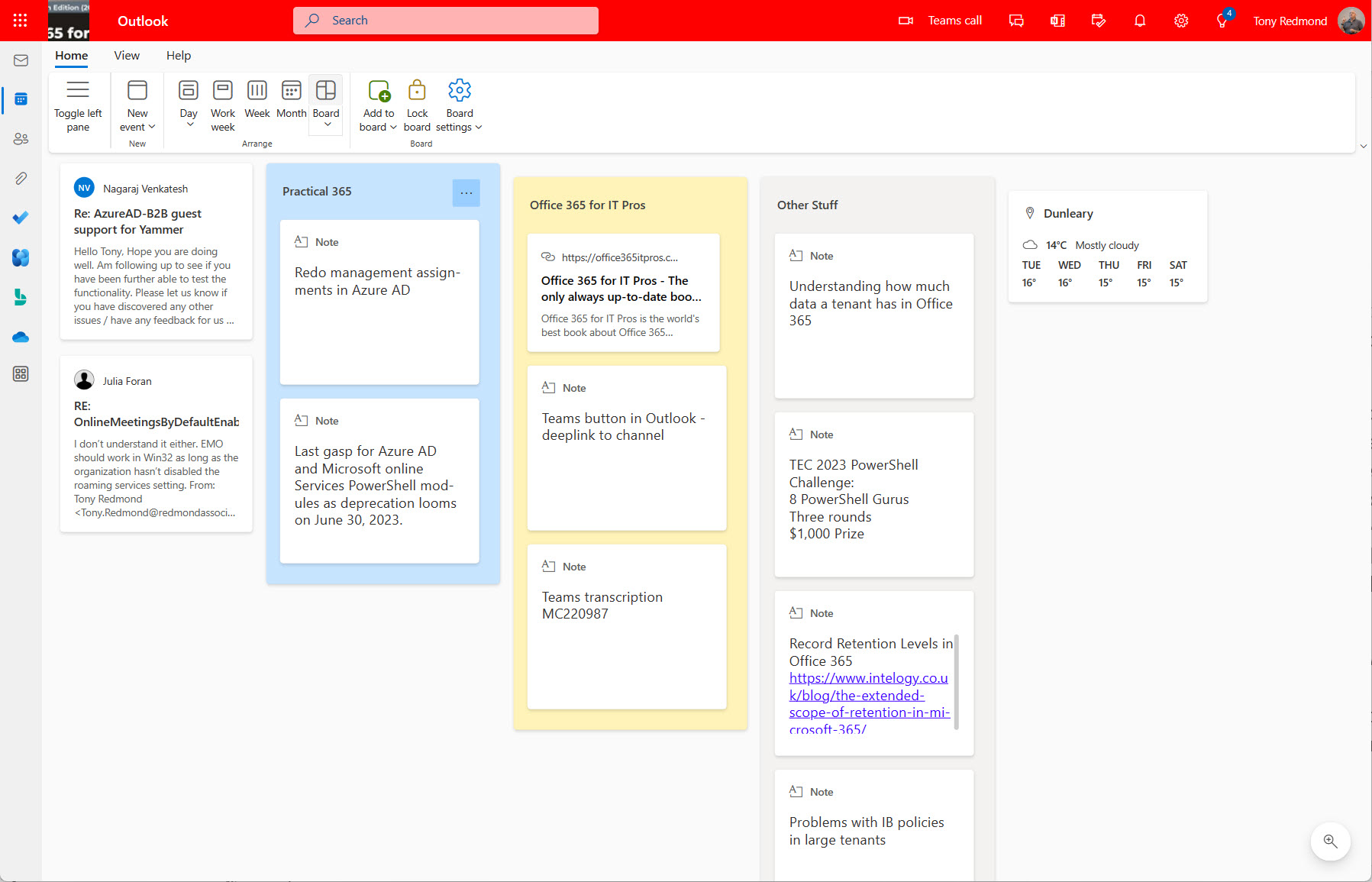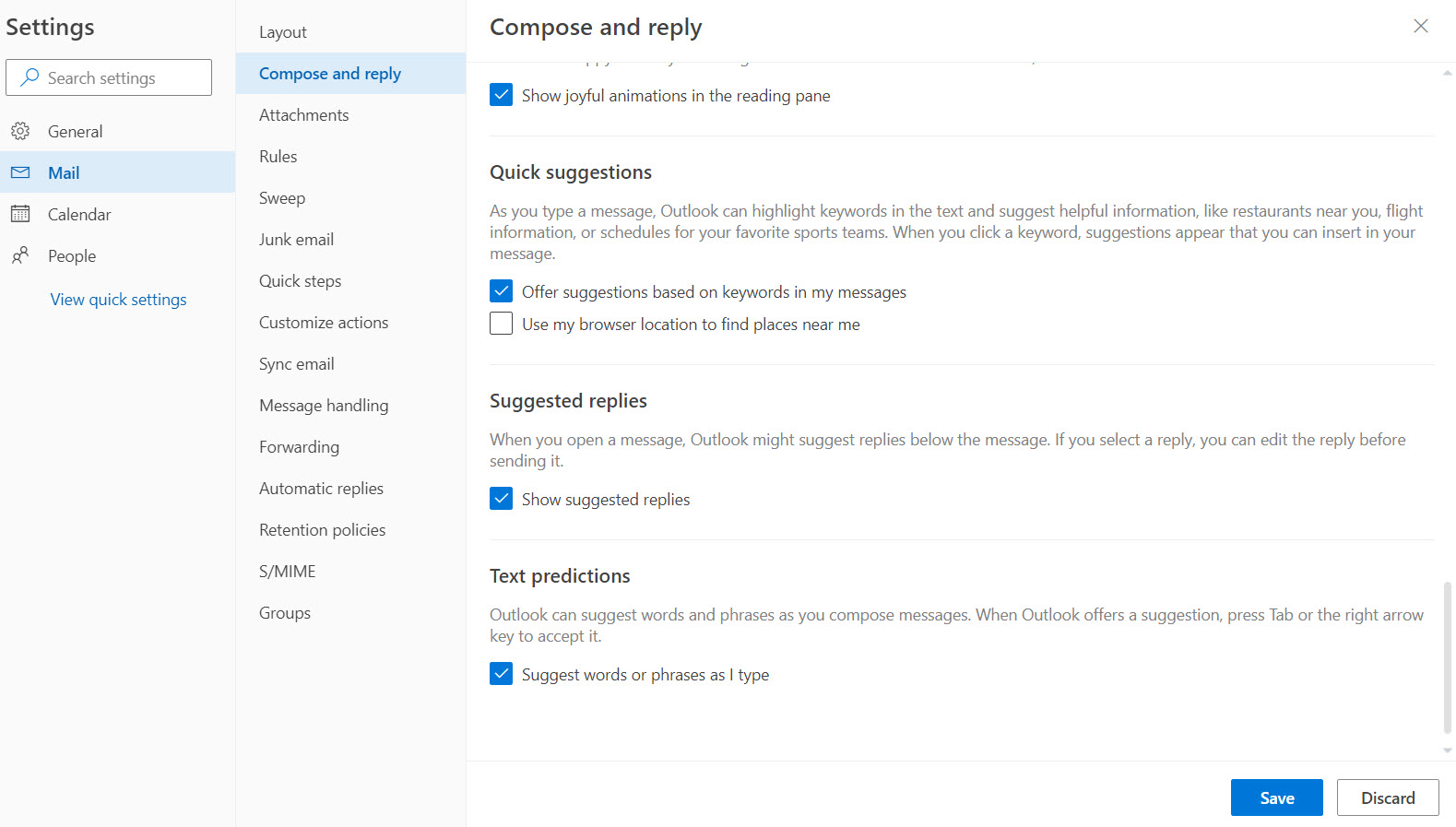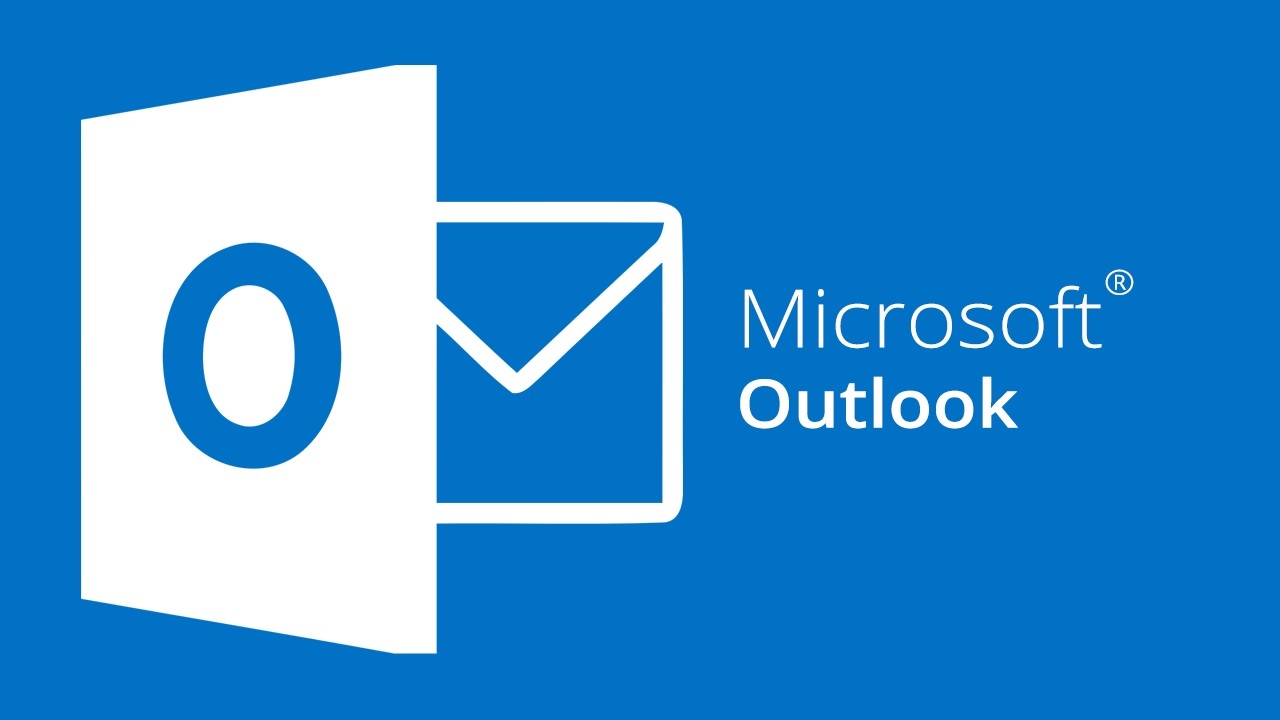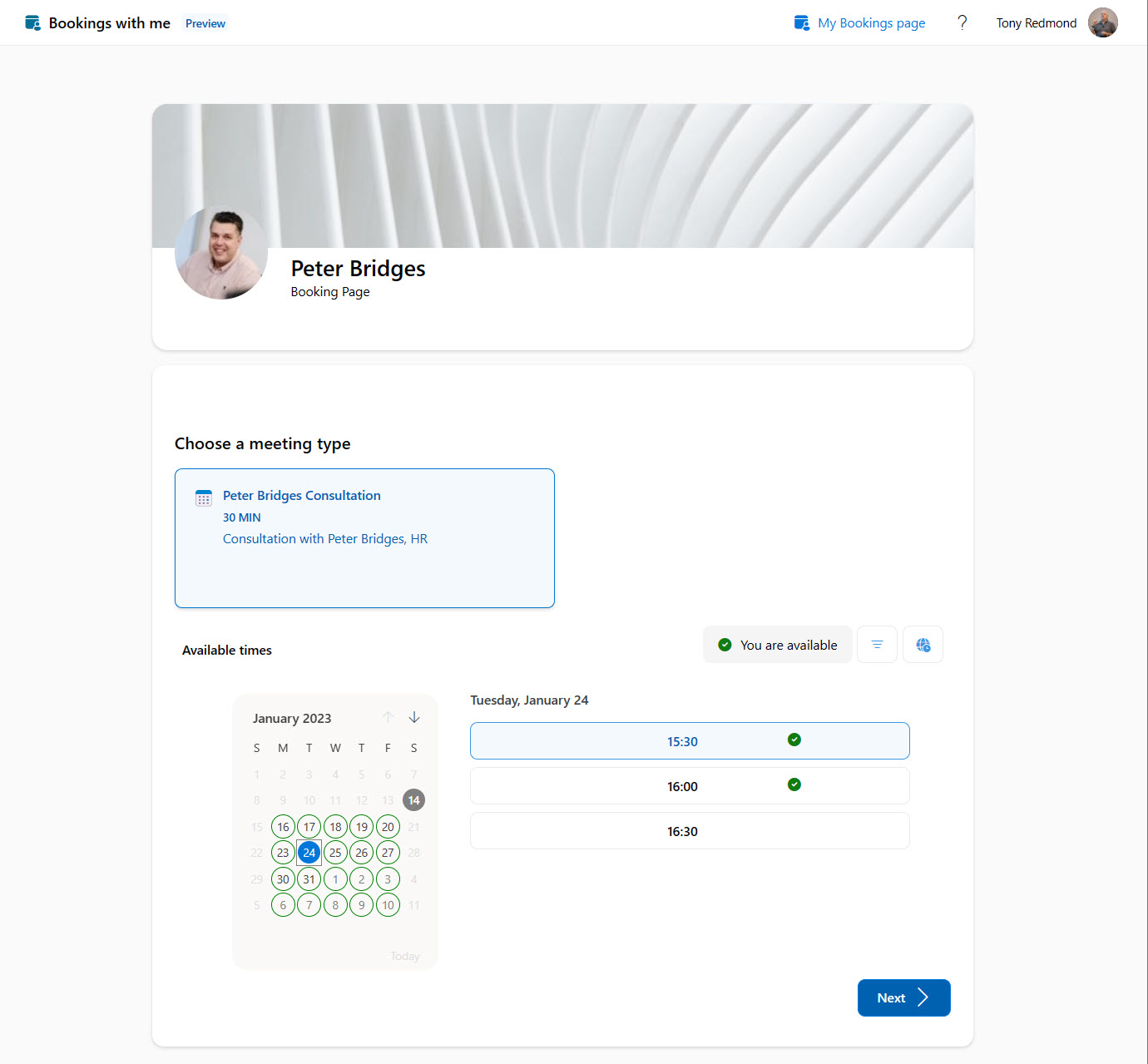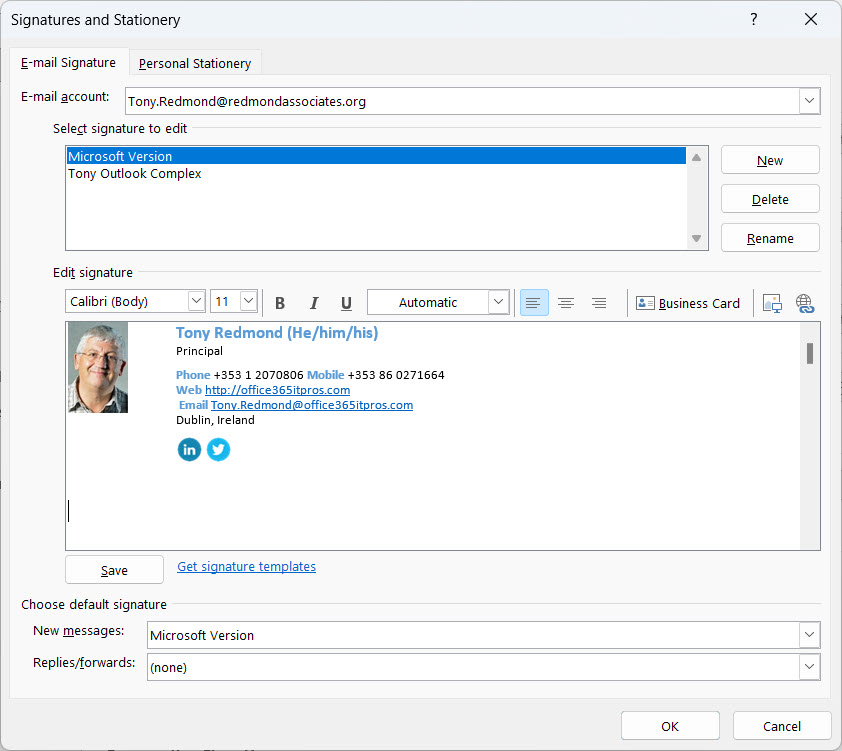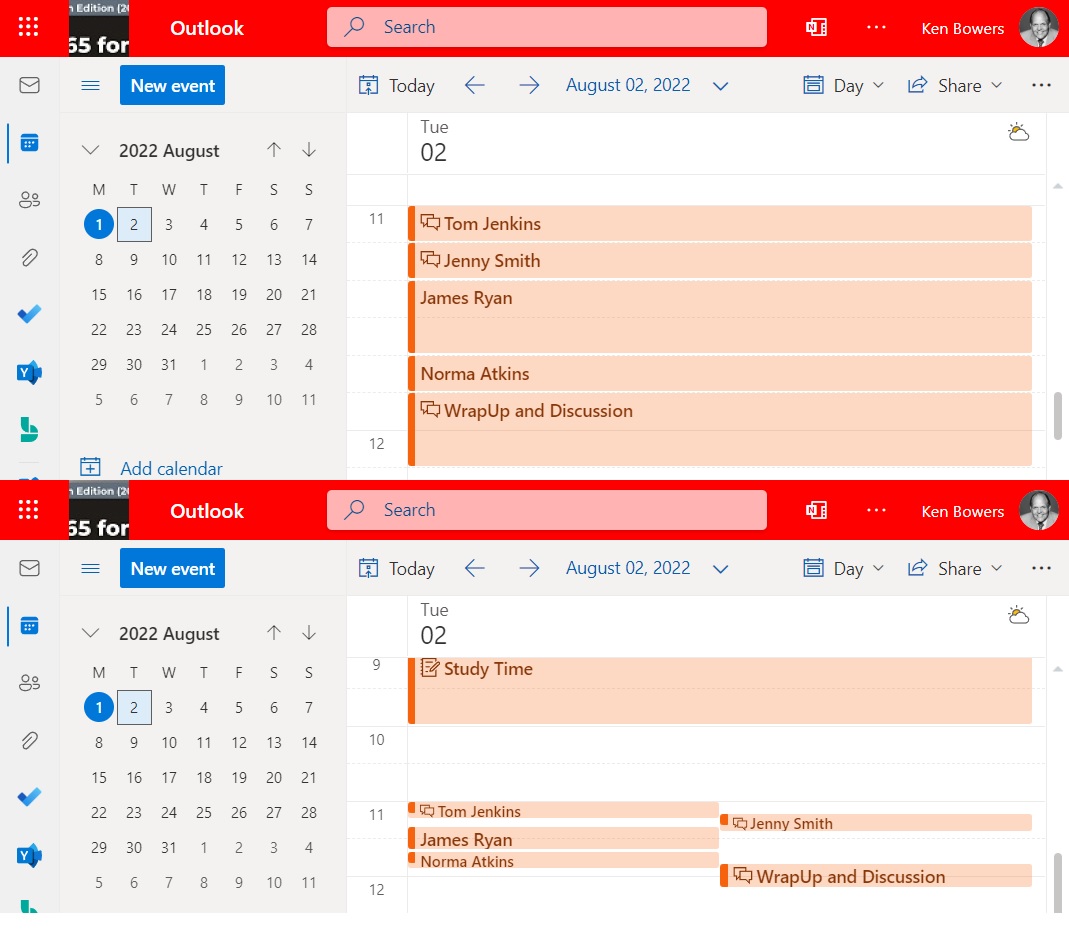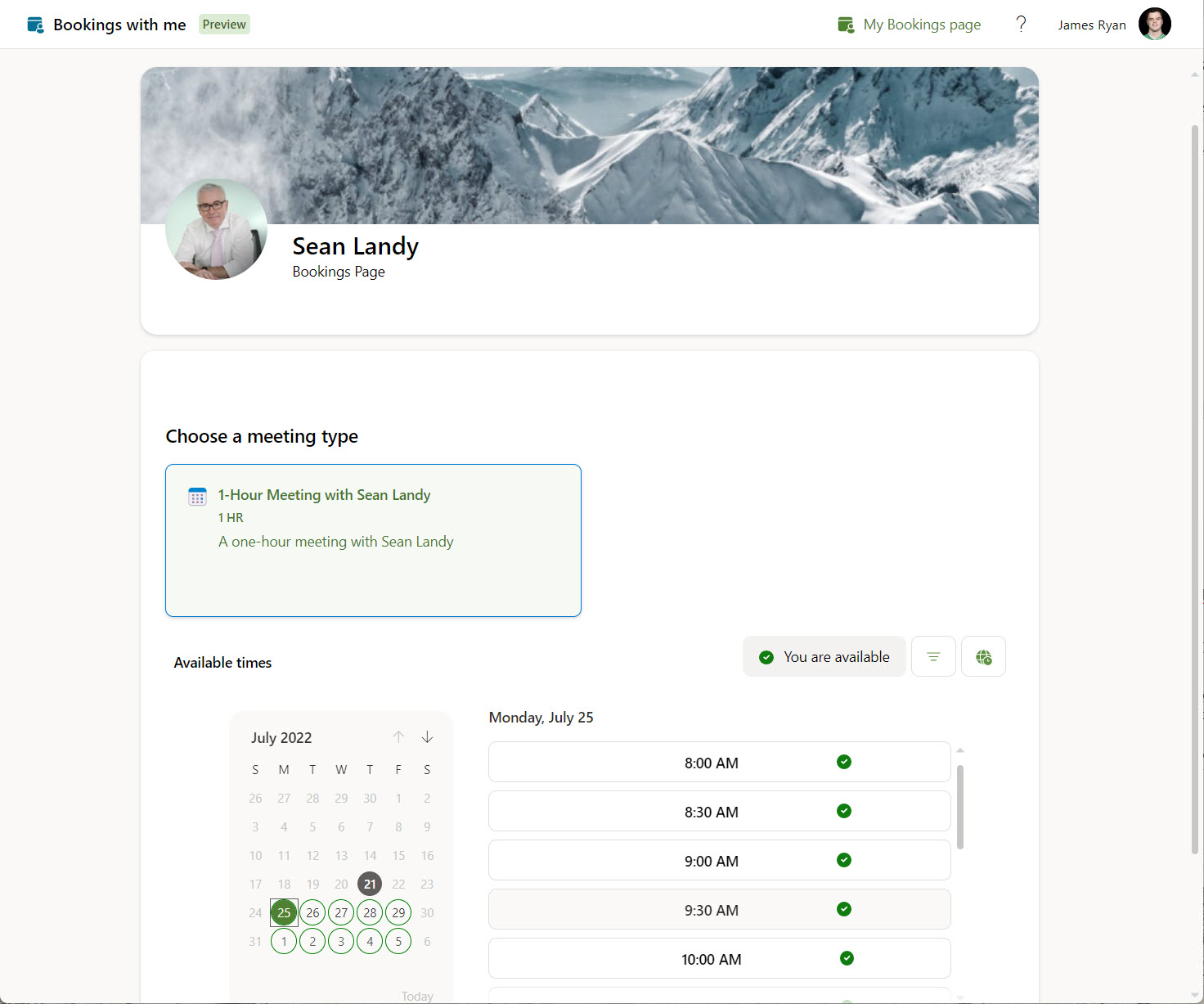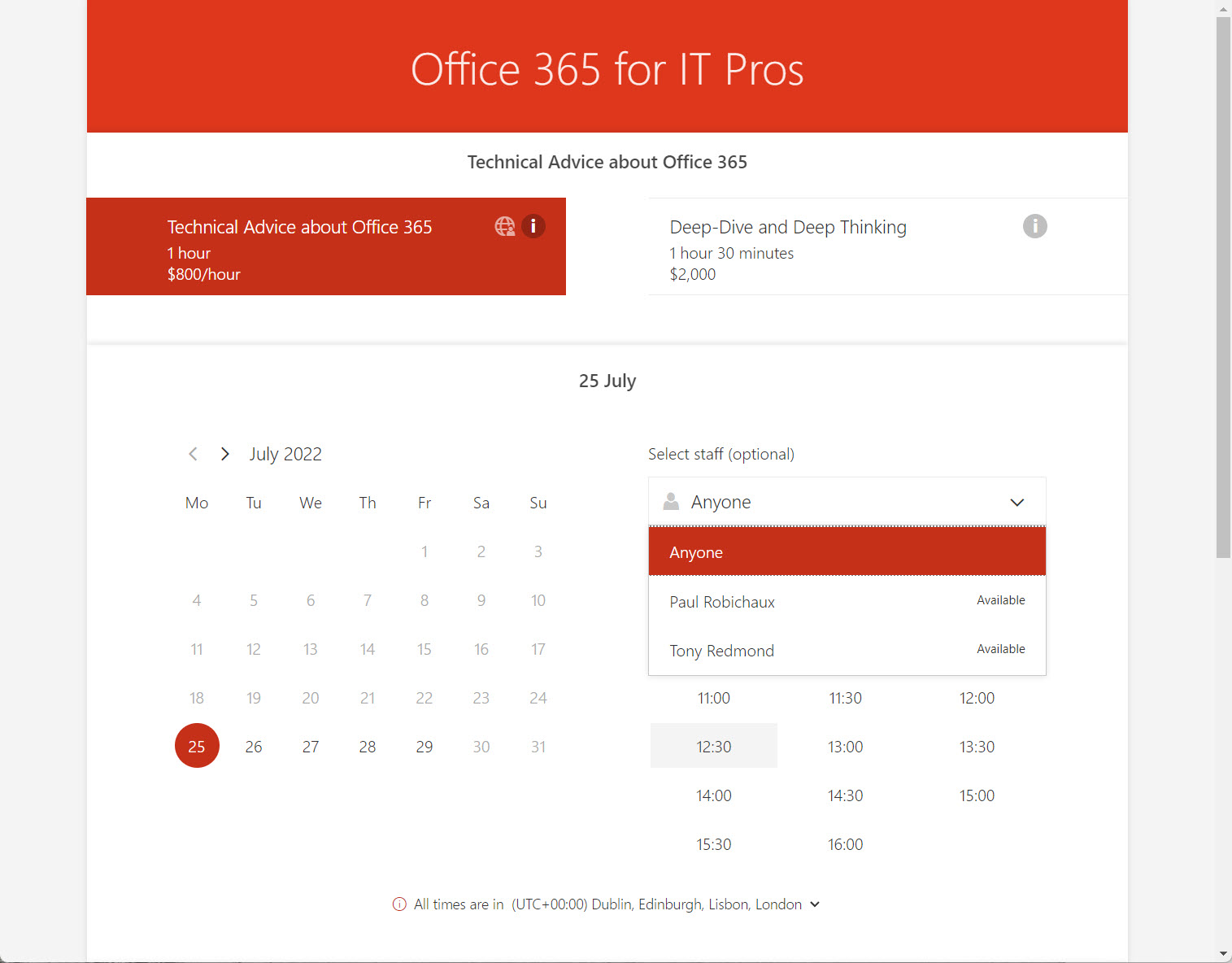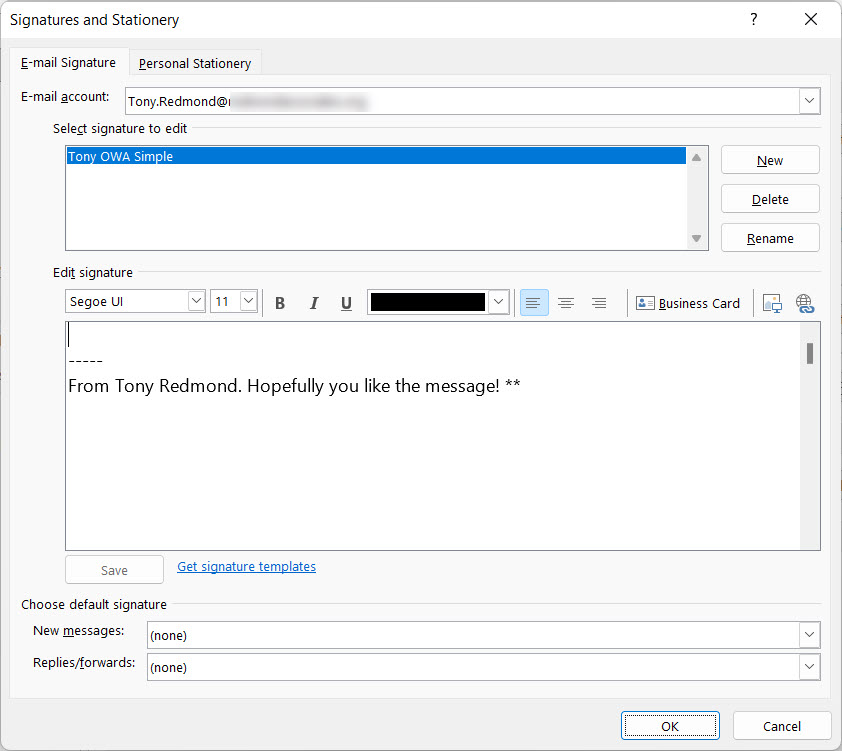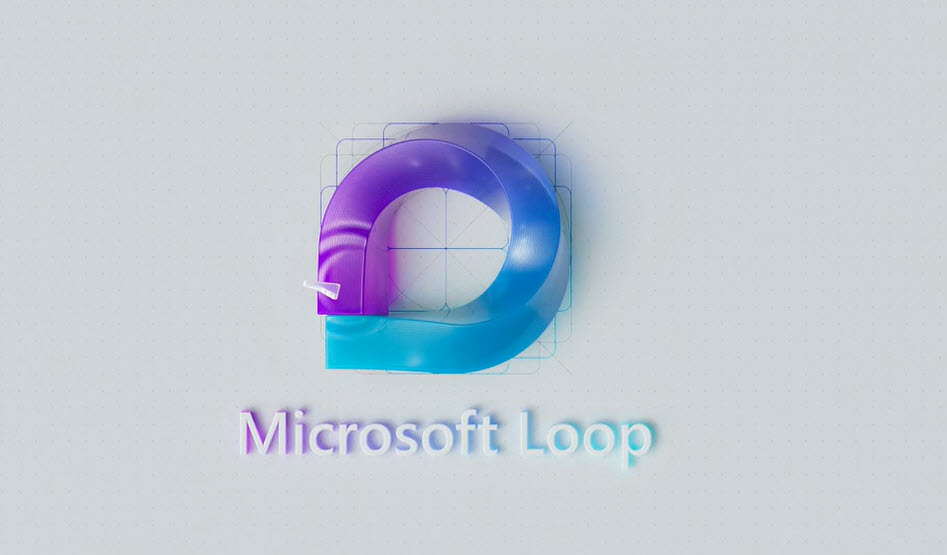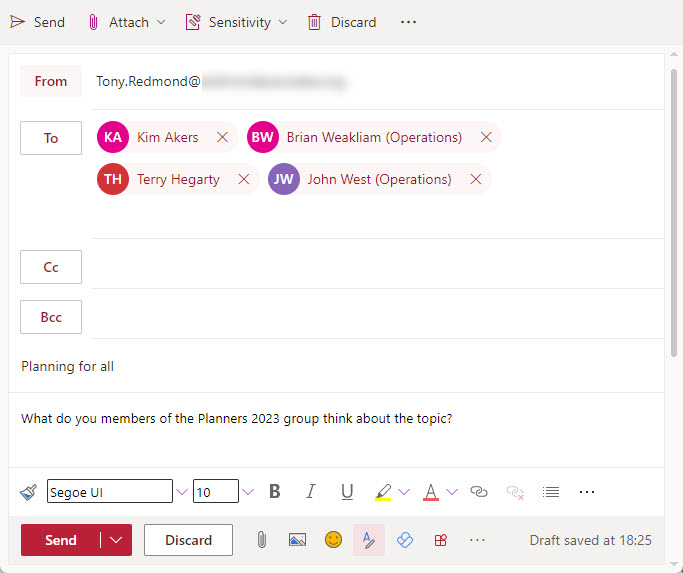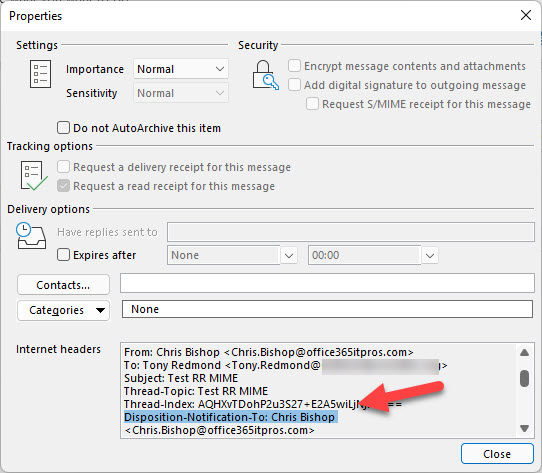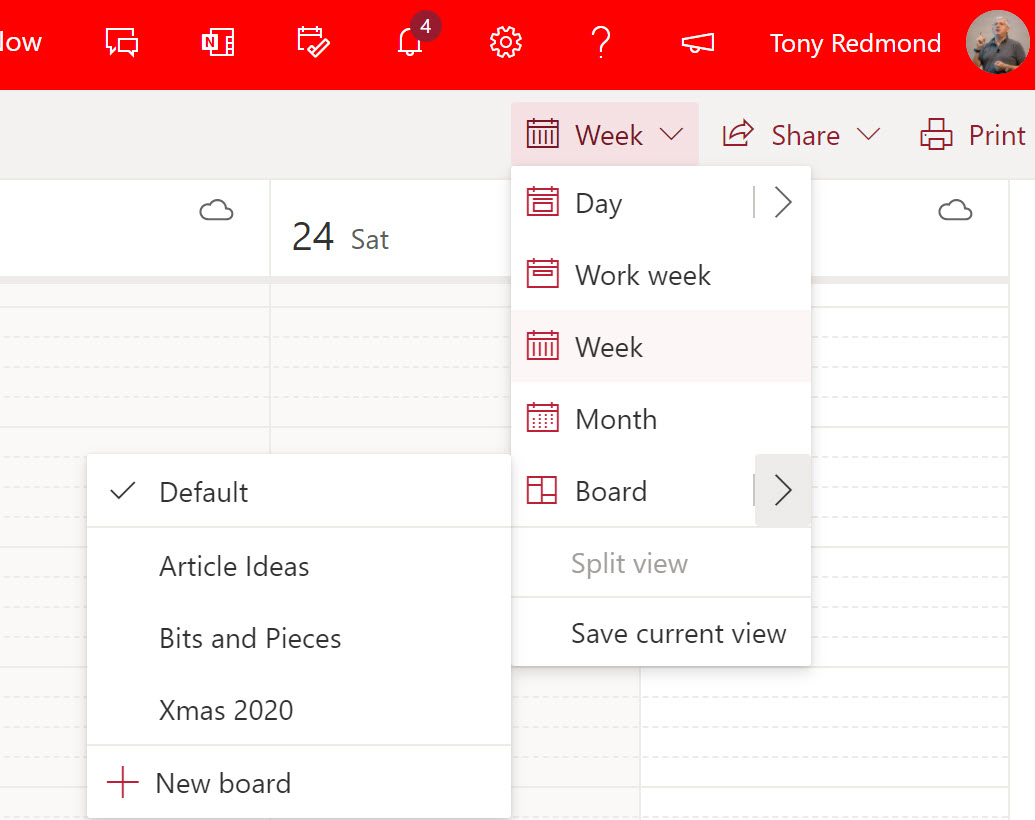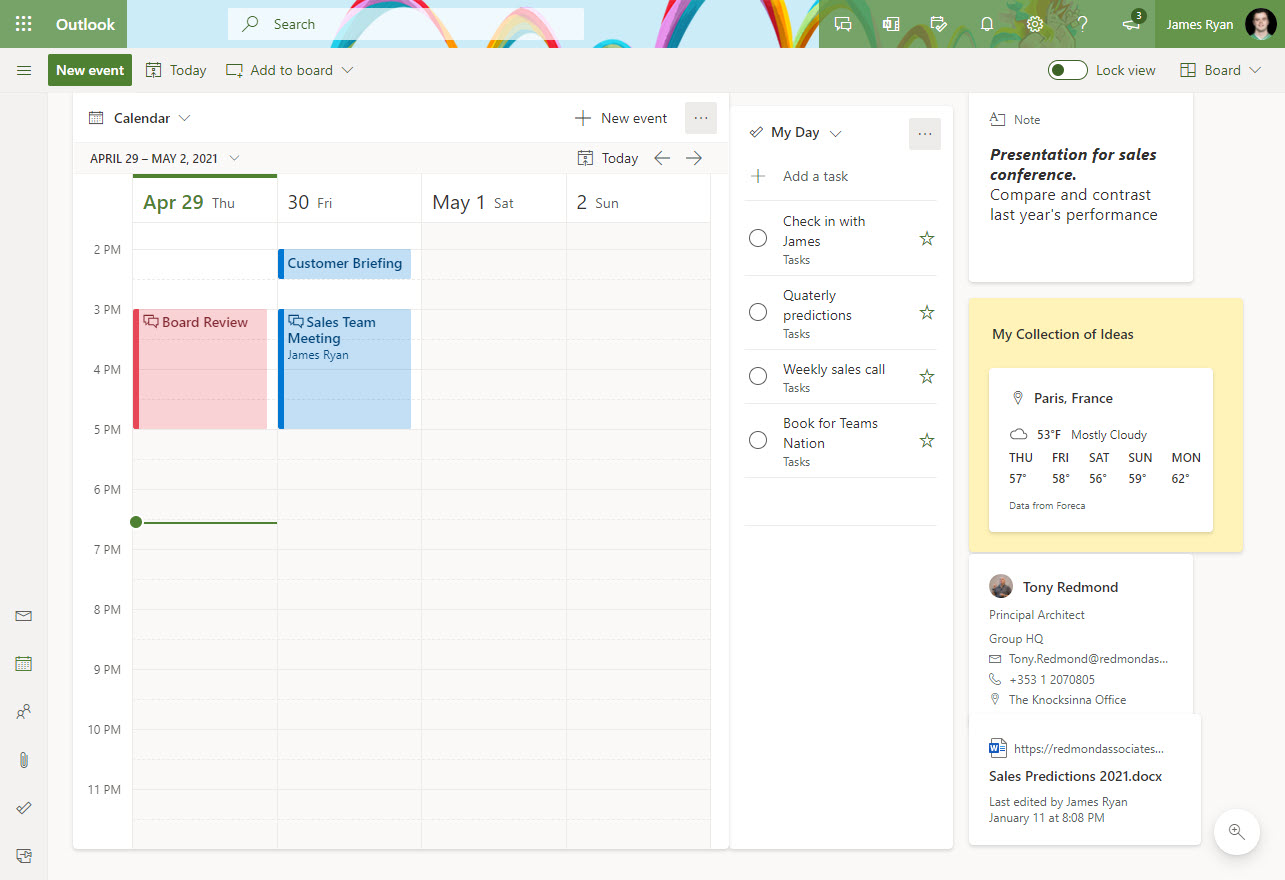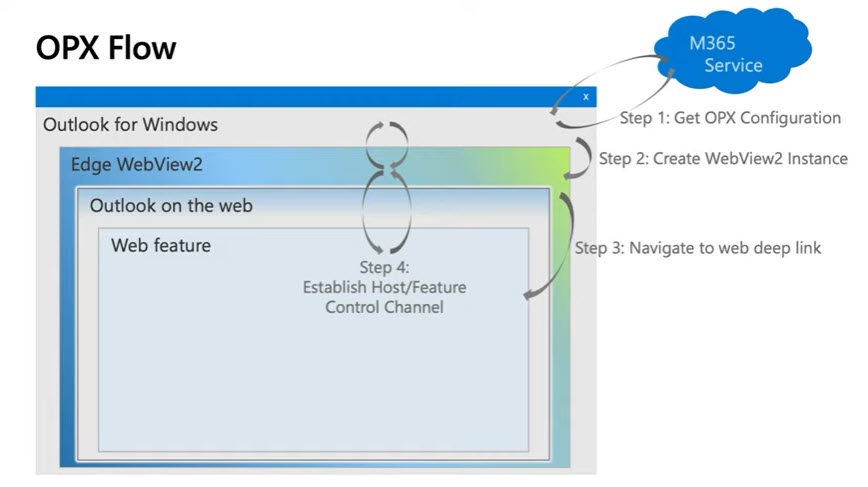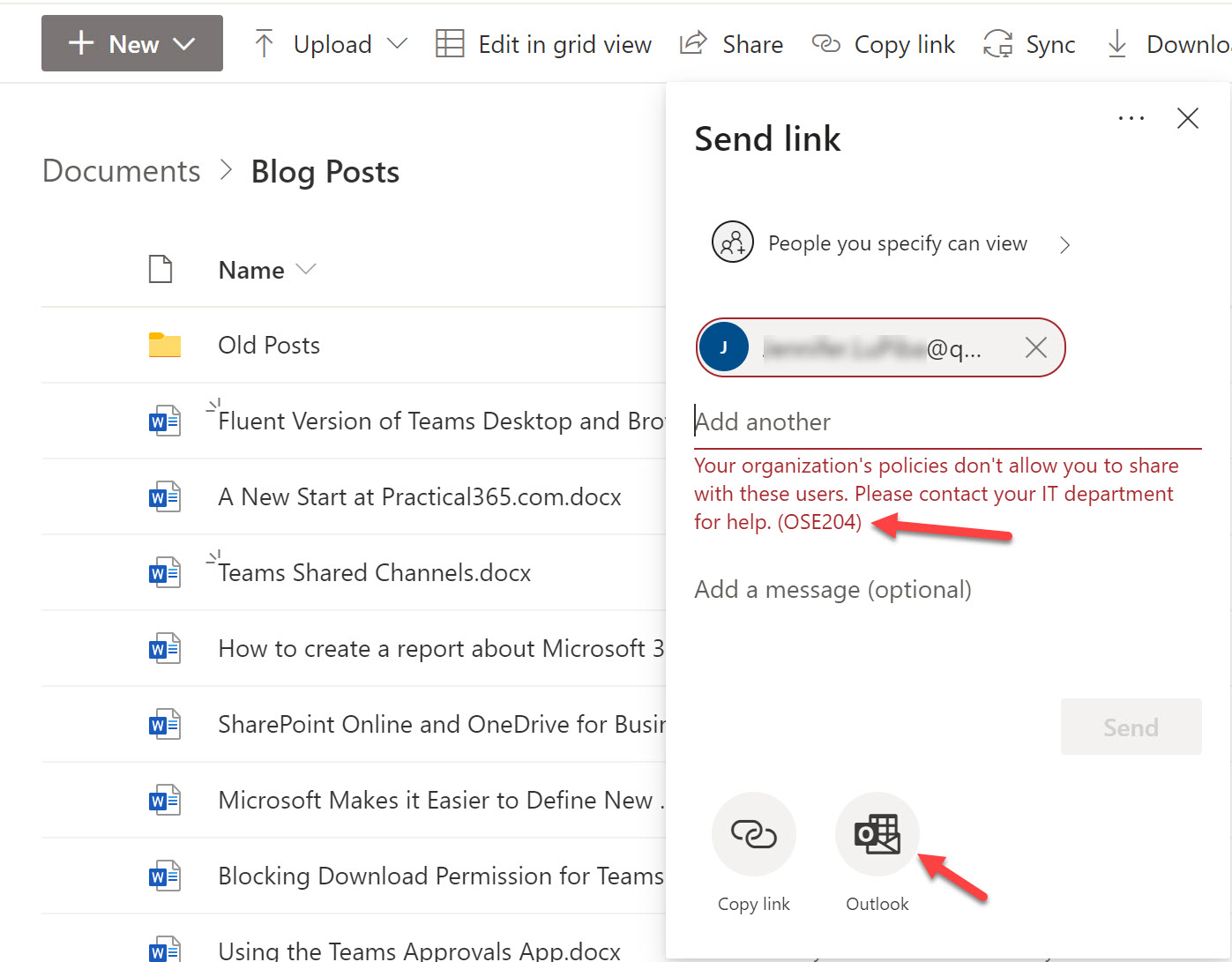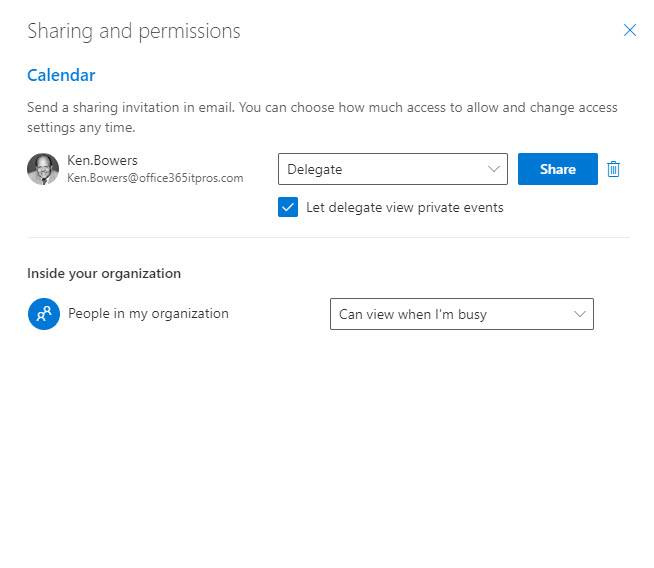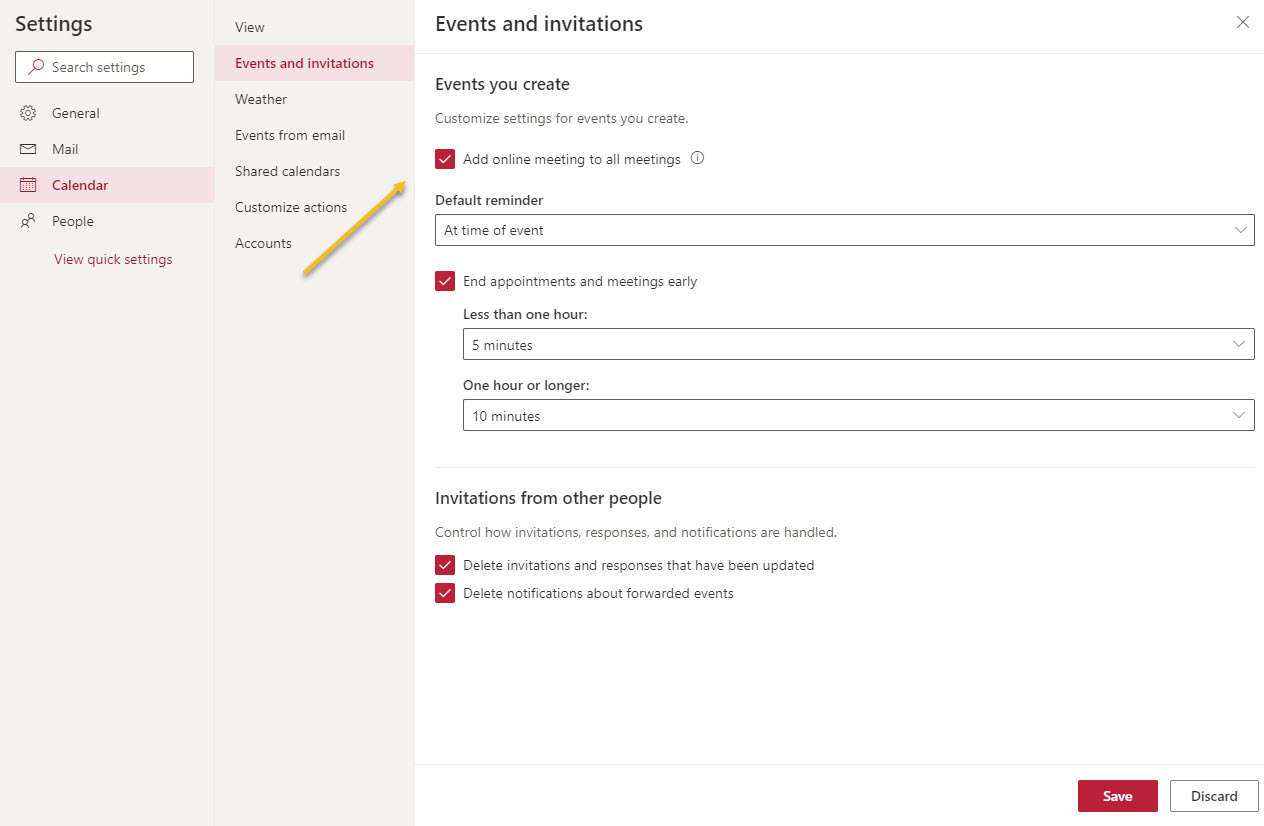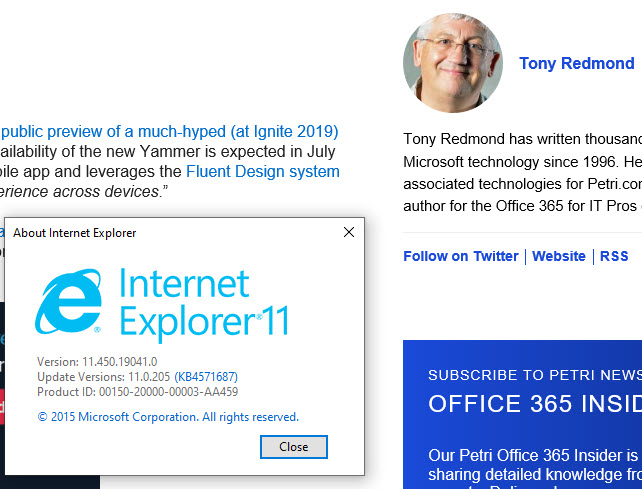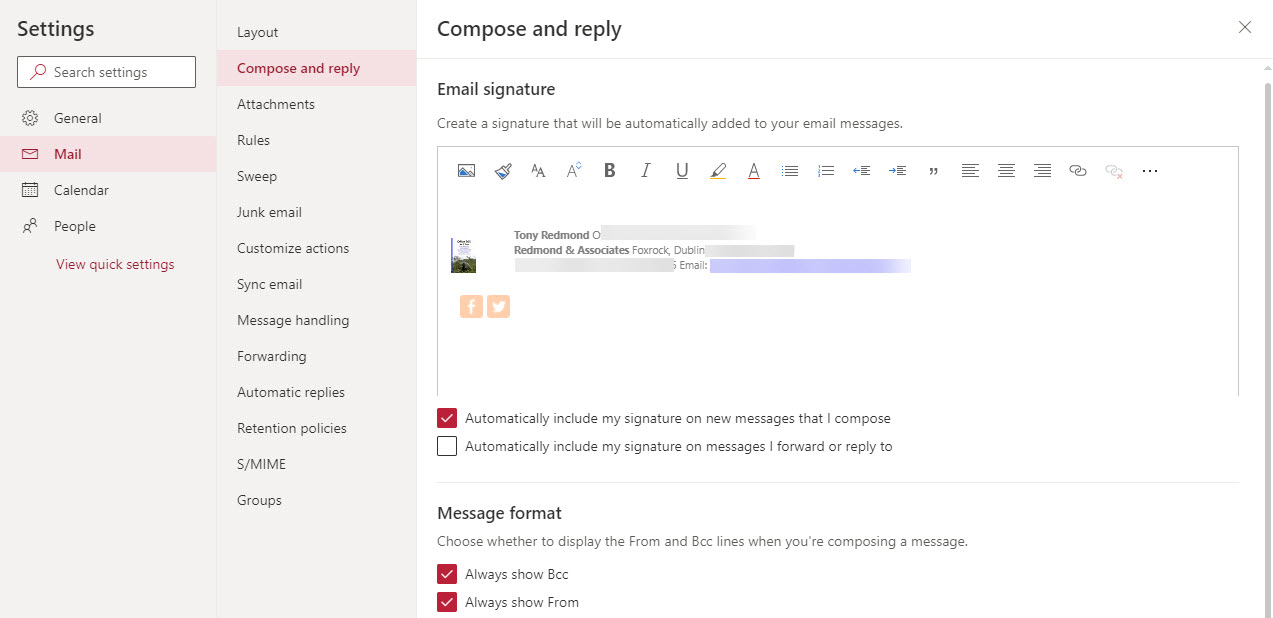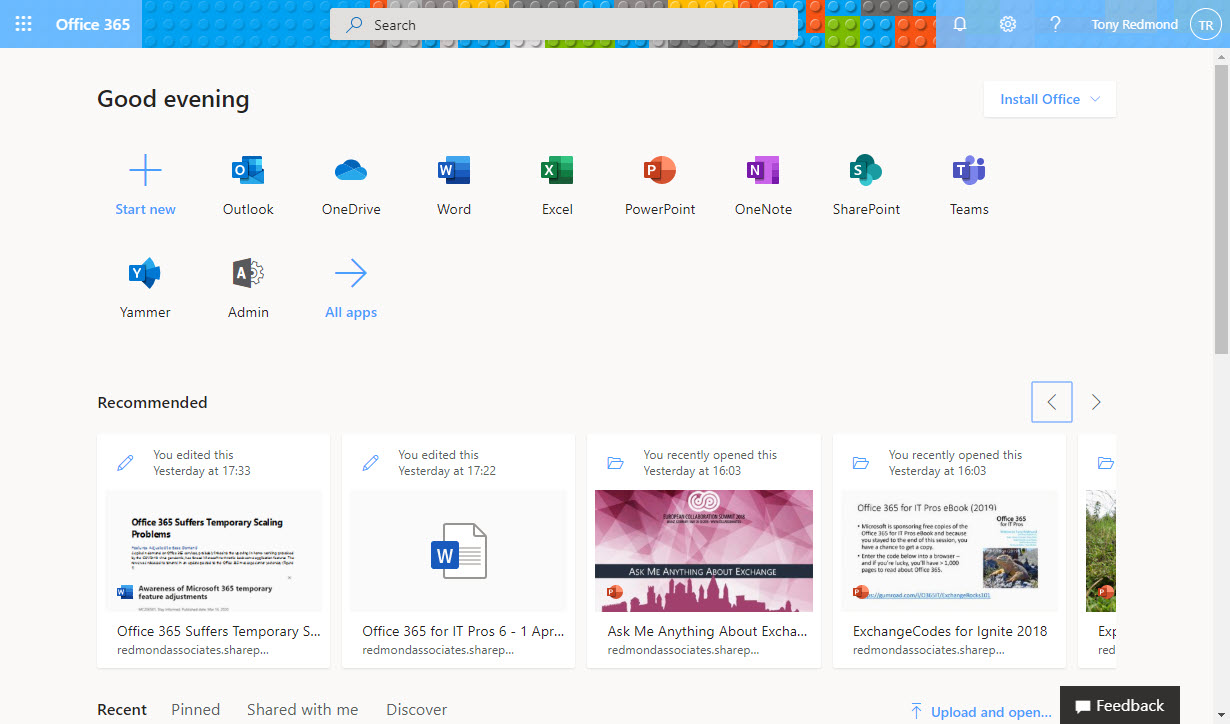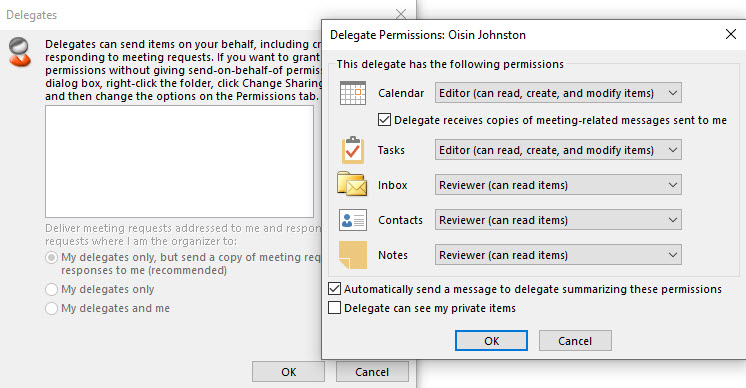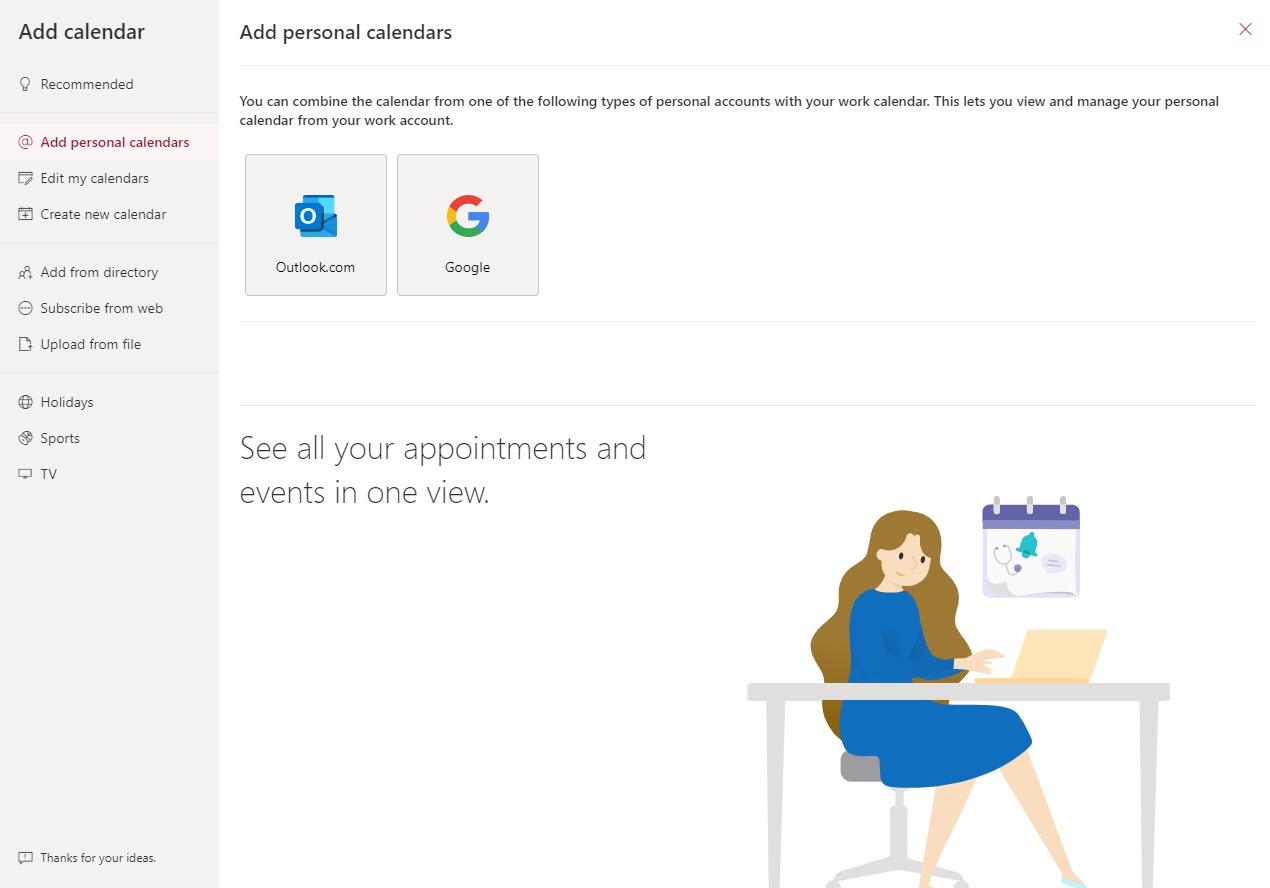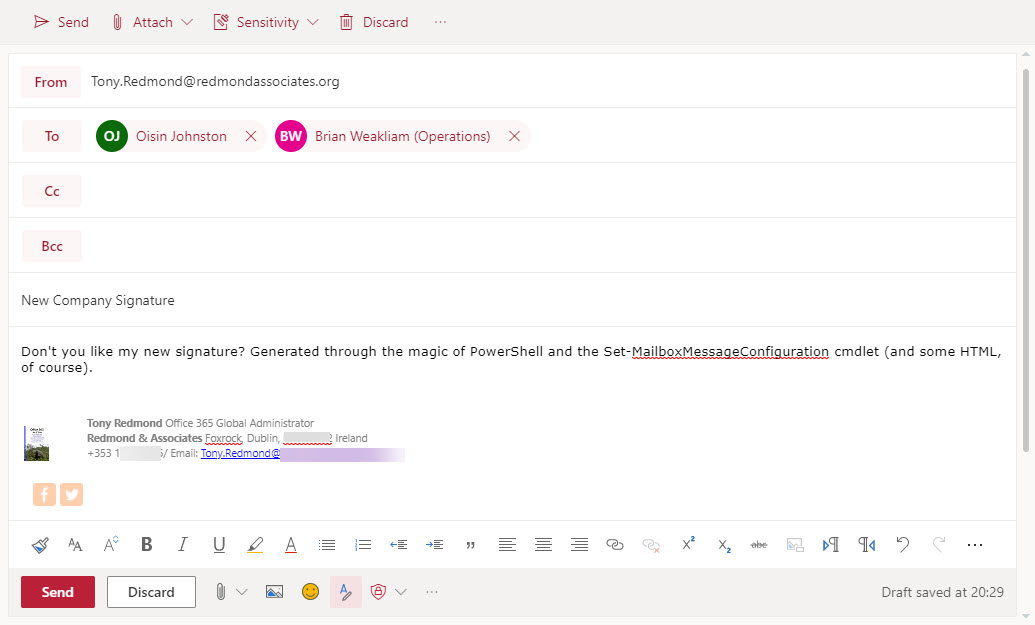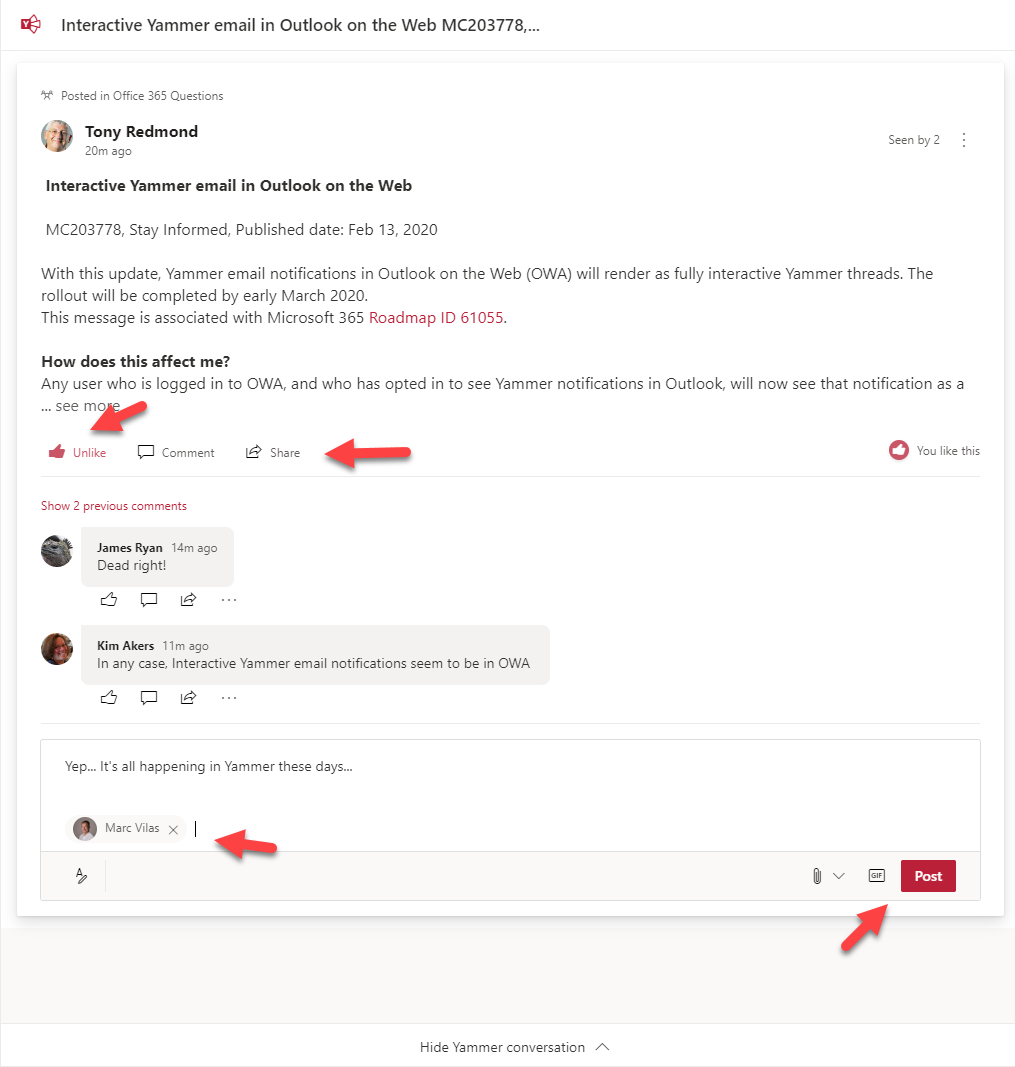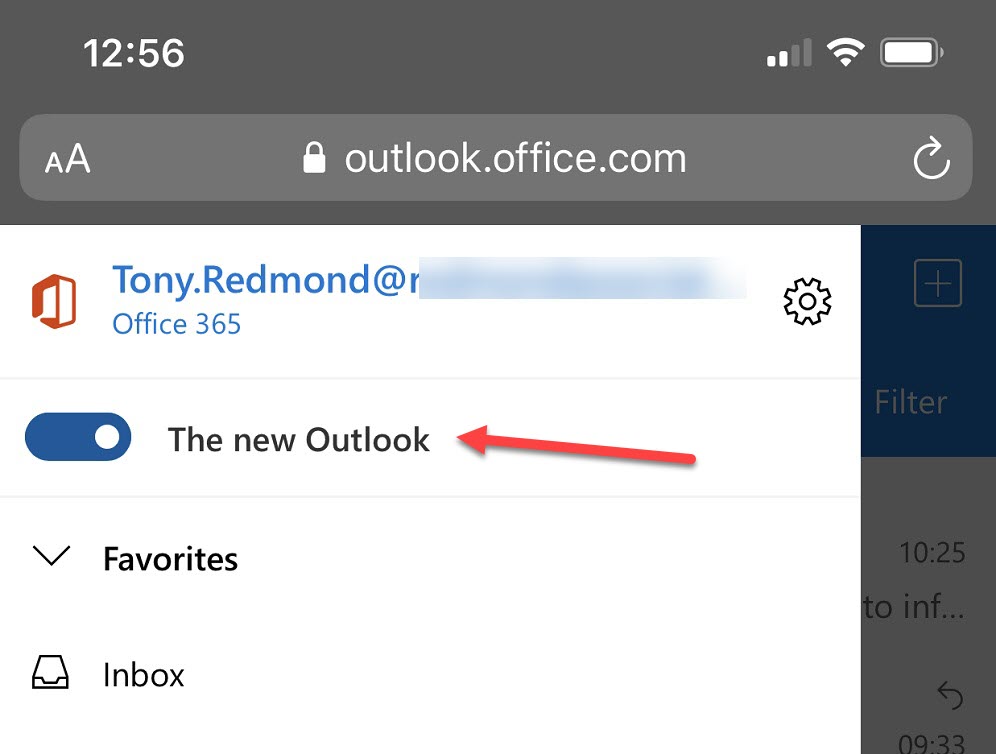A new setting in OWA options allows users to choose to preserve declined meetings. Keeping details of declined meetings can help users to find information included in meeting details of data created during meetings like chats and meeting summaries, or forward the meeting to someone else if needed.
Two message center updates from August 1 cover OWA search refiners and a revamped search box (appearance only). One wonders why the two aren’t covered by one notification and one Microsoft 365 roadmap item. Two notifications result in not a lot of change. The search refiners might please some users and be useful at times. but I wonder if the new font and borders for the search box will be noticed by the average user!
It would be nice to report that Microsoft’s new My Groups page delivers great user-centric group management portal, but it doesn’t. My Groups can’t deal with distribution groups (lists), which is surprising because distribution lists are a valid Azure AD group type. What’s worse is that the OWA option to manage distribution lists doesn’t work any more. There’s little evidence of Microsoft joined-up thinking here.
An update for Microsoft 365 Data Loss Prevention policies supports the configuration of oversharing popups for Outlook shown when a user composes email with specified sensitivity labels for either the message or any attachment. The idea is that the popup (a policy tip) helps the user to understand the problem and why they are violating a DLP policy so that they can address the problem before attempting to send the message.
Microsoft has announced that in Fall 2023 they will force Exchange Online users who run unsupported browsers to use OWA Lite instead of OWA Premium. The restriction will start rolling out in September 2023 and be implemented worldwide by November. People who use browsers like Opera and Brave will be affected and be forced to use Chrome, Edge, or Firefox (or Safari on macOS) to use OWA Premium.
Work locations are a new concept that OWA and Teams share in an attempt to make it easier for people to schedule meetings with knowledge of where participants are working from. It’s a nice idea but the implementation is sadly flawed because of a lack of flexibility in defining or customizing locations. Let’s hope Microsoft improves the feature in future.
The Outlook board view originated as Project Moca, an app to organize items from Outlook and other sources, then became the board view in the OWA calendar. That status lasted two years and now Microsoft will retire the board view from Outlook on June 26, 2023. It’s probably because Microsoft 365 boasts a surplus of ways to record notes in some shape or form. That, and the fact that hardly anyone uses Outlook boards.
Microsoft uses machine learning in Outlook and Exchange Online to create the basis for what they call intelligent technology like suggested replies and text prediction. To generate the language models used to figure out how Outlook should respond to users, Microsoft needs to copy data from user mailboxes for processing. The data is removed and the results stored in user mailboxes once processing is complete. Is this an issue for Microsoft 365 tenants? It all depends on your view of how data should be processed.
A recent Practical365.com article got me thinking about the Report Message and Report Phishing Outlook add-ins and how the new Monarch client can’t use COM add-ins. Microsoft is busily updating its add-ins to move away from COM to embrace the new approach based on HTML and JavaScript. If Microsoft is taking this action, I hope the same is happening in ISVs and in-house development teams who generated COM add-ins in the past.
Microsoft has announced bookable time for OWA. It’s really just another entry point for the Bookings with Me app in an attempt to get more people to use the app. Bookings for me is a useful facility for people that need to publish available meeting slots for others to request time with them. Whether it’s something that the average Outlook users wants or needs is quite another matter.
Microsoft says that the roaming (or cloud) email signatures feature is now fully deployed. The new approach solves an Outlook problem, but it’s not a universal panacea for the management of email signatures within large organizations where you want consistency in the signatures used by everyone. You’ll need an ISV solution to get that kind of functionality.
Outlook Groups now boast support for folders and rules. In other words, group owners and members (if allowed) can create new folders and move and copy items from the inbox to those folders. They can also create rules to process inbound email arriving into the group inbox. It’s all well and good, but there are a few points to understand about how things work.
The OWA calendar has gained some new features to help users see more detail about events. Users can choose different time slot lengths from 5 to 60 minutes. They can add time zones to the calendar display, and they can choose a different color for events. Nothing earth-shattering, but the changes will please users.
Outlook’s new Booking with Me feature is rolling out worldwide. Any user with an Exchange Online license can create a personal bookings page to allow other internal and external people to book meetings with them. It’s a nice idea and a good example of how Microsoft can use its software toolkit to create new solutions.
The Microsoft Bookings app is available to many Office 365 users. The app is designed to host a shared calendar for a group of people. The calendars are in special scheduling mailboxes that are created by the Microsoft 365 substrate. Appointments in the calendar can be scheduled by people through a bookings page, which can be on the internet or confined within an organization. It’s a neat way to run an online business – if only Bookings could take in some money for all that scheduled work.
Microsoft promises they will deliver the long-awaiting Outlook roaming signatures feature in October 2022. There are signs of progress in Outlook beta builds, but the development of the feature has caused some disruption for Microsoft 365 tenants because it broke the cmdlet that updates HTML signatures for OWA. Oh well, it will all be OK in October. At least, that’s the plan.
Microsoft Loop components are available now in Teams chats and will soon become available in OWA. Loop components are a new way of collaborative working that some will find very attractive. However, under the covers, some compliance issues can block organizations from allowing the use of Loop components. This post explains the issues involved in eDiscovery and export of items containing Loop components.
A new control in the SharePoint Online configuration is available to enable or disable Microsoft Loop components in Microsoft 365 apps, just in time for their introduction in OWA and Outlook for Windows. However, before we get all excited, there are some important issues with loop components when exported in eDiscovery search results that might make tenant administrators ponder. Just a tad…
I’m not sure people use moderated distribution lists with Exchange Online all that much, but those who do might be frustrated by a client inconsistency between OWA and Outlook. OWA can expand the membership of a moderated distribution list; Outlook for Windows cannot. It’s a small point. Maybe Project Monarch will help…
A reader request asked how to force users to send read receipts. This is a client-side feature so the settings involved differ from client to client. We explore how to control them in OWA and Outlook for Windows. A mixture of PowerShell and system registry settings help create a solution. We’re leaving figuring out how to manage other clients to our readers.
Project Moca is no longer a separate OWA component. Boards created in Moca are now available through the OWA calendar, just like other boards created there. The question is how Microsoft will bring the board view to Outlook desktop. I figure it’s a candidate for OCX and WebView2, just like the Room Finder. Time will tell.
Outlook and OWA users will soon see a banner notification to recommend the installation of an Edge extension. The extension logs into the user account to peek into the mailbox, calendar, tasks, and contacts. Tenant administrators have until July 30 to decide if they will block the display of the banners. This can be done using the Office Cloud Policy Service or a Group Policy Object.
Microsoft is rolling out a new calendar board view for OWA. The new board looks very similar to a Project Moca board, which isn’t surprising because it’s a customized Moca board tailored to focus on the calendar. There’s no news yet when Project Moca might exit its current preview status, but maybe the new view will help by convincing people about the worth of configurable boards.
Microsoft introduced a new organization setting for Office 365 tenants to have Outlook shorten meetings automatically. The idea is to create a break between meetings to give people time to decompress and prepare for their next call. It all sounds good and it makes sense to build buffers into your calendar during busy days. The problem is that other people might come late to a meeting, start it early (without you), or prolong it into your carefully scheduled buffer. Technology can help humans do the right thing, but in this case it’s strictly advisory.
Organizations can choose to control updates of user photos by policy in their Microsoft 365 tenants or allow users to go ahead and use any image they like. In this article, we explore the value of having a user photo for every Office 365 account (and Teams and Groups too) and the choices organizations must make when they decide whether to control user-driven updates.
Microsoft’s One Outlook program aims to rationalize the current client set. The Edge WebView2 component allows Outlook desktop to reuse OWA features, which is why Microsoft now distributes WebView2 with the Microsoft 365 apps for enterprise (desktop apps). We’re now seeing signs of reuse with an obvious example being the appearance of OWA’s room finder in Outlook for Windows.
Microsoft will include the Edge WebView2 runtime with Microsoft 365 apps for enterprise version 2101 or later. This doesn’t mean they install Edge; it’s simply a software component to make it possible for Outlook desktop to run features developed for OWA. You can block the deployment if you like, but there’s really no good reason to do so.
If you encounter an error when sharing a SharePoint file, you might see an error code like OSE204. What do these mainframe-like codes mean and why does SharePoint show them? Or more importantly, how did the sharing capability of a site change through administrator incompetence? And why is Microsoft removing the option to send a sharing link via Outlook (OWA)?
Sometimes delegate access for an Exchange Online calendar goes awry due to corrupted items in the mailbox. To help sort out problems, Microsoft has upgraded the Remove-MailboxFolderPermission cmdlet to do the work that used to be done by a multi-phase fix performed using the MFCMAPI or EWS editor utilities. The nice thing is that this method is quick, simple, and works well.
OWA calendar settings include the option to make online meetings the default. You can control whether online meetings are the default at an organization and mailbox level. Outlook desktop relies on system registry settings to know if online meetings should be created. An add-in loaded is loaded automatically to insert the neceessary data to make a meeting online if necessary.
At the Ignite 2020 virtual conference, Microsoft ISV Code Two Software demonstrated a new Outlook API to make email signature management easier across all Outlook clients. The Signature API supports web add-ins that work on all Outlook platforms to allow users to select which corporate email signature to apply before sending messages. The new API should be available at the end of 2020 and we can expect updates from multiple ISVs in the email signature management space to exploit the new capability.
Office 365 Tenants need to stop people using Internet Explorer. On November 30, Teams stops support for IE11; nine months later, the rest of the Microsoft 365 apps cease support. According to Microsoft, the only browser in town is the new Edge (which has an IE mode), but most will keep on using Chrome, Firefox, Brave, or Safari as they do today.
If an Office 365 tenant goes to the bother of creating nice OWA autosignatures for users, shouldn’t we also removed the ability to edit the signatures in OWA settings? RBAC seems like the right way to do the job, but in this case, the way RBAC restricts options by removing the right to run cmdlets or parameters means that the block affects other OWA settings. Fortunately, the Exchange developers thought of this and provide an option in OWA mailbox policies to save the day.
In a moment of levity to lift the current situation, we discuss the wide range of themes offered by Office 365 to users. People can choose from 49 different themes to customize the online apps. You can go crazy with something like Super Sparkle Happy, display your love of cats, or choose a simple color. Once chosen, you should see the same theme across all the Office online apps. Except Teams, which does its own thing.
In addition to mailbox permissions, Exchange Online supports folder-level delegated permissions. Users can create folder delegations through Outlook desktop. Like mailbox permissions, it’s a good idea for tenants to check folder-level delegations to ensure that people don’t keep permissions for longer than they should. We explain how to create a PowerShell script to generate such a report.
You can now add your personal Outlook.com or Gmail calendars to your work OWA calendar. The integration allows for only one personal calendar, and OWA synchronizes events from the personal calendar to make sure that people don’t schedule work events when you have personal commitments. TeamSnap calendars are also supported (real-only), but this feature is likely to not be used outside the U.S.
OWA stores user signatures in mailboxes, which makes it a lot easier for Office 365 admins to update signatures centrally with just a few lines of PowerShell and some HTML magic. OK, maybe more than a few lines… but it’s a lot less complicated than it is to mess around with the system registry and points the way to how Microsoft might introduce cloud signatures for all Outlook clients.
If you receive a notification about Yammer conversations in OWA, you might notice that you can now do all sorts of new things to interact with Yammer while remaining in OWA. It’s part of Microsoft’s effort to make Yammer more relevant and accessible to people who prefer to communicate through email. And the nice thing is that the approach works well.
OWA now includes Files in its “module switcher”). The new module allows fast access to attachments stored in any folder in an Exchange Online mailbox. It’s a neat feature that will please many people simply because it makes finding often-elusive attachments just that bit easier.
Not many Office 365 users choose OWA as their mobile client, but those who do will soon be forced to use the new OWA because Microsoft is removing the toggle to allow people to switch between the old and new versions in February, just like they did for workstation versions last July. The new OWA is a fine client, but its usefulness on mobile browsers is not as good as the functionality offered in Mobile Outlook, which continues to be our choice as the best mobile Office 365 email client.
